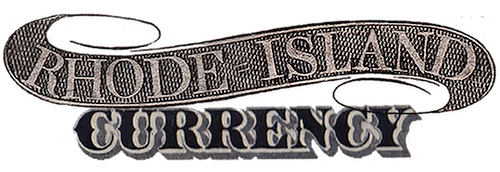Scituate Bank
An early historian of Scituate notes:
“The first bank established in Scituate, named originally the Scituate Bank, opened at Elmdale in North Scituate in February, 1818… [It] was capitalized with a stock of $10,000 in 2,000 shares of $50 each. A nine man board of directors was appointed to serve until the First Annual Meeting of Stockholders on the first Monday of the October following incorporation. The original nine were David Phillips, Charles Harris, Abner Peckham, John Harris, Jr., Oliver Aldrich, Emery Hopkins, Samuel Hopkins, Jr., Josiah Westcott, and Ziba Smith. At the October meeting their terms were continued and four new members were added to their number.
“For eighteen years the bank appeared to be operating in a normal and satisfactory manner, but the deteriorating business conditions of the mid-eighteen-thirties, which developed into the great, nationwide business depression of 1837 adversely affected its affairs, augmenting the evils of poor management and bad judgement to produce an unsound financial condition. In June, 1836, three Commissioners in Trust- James Y. Atwell, George Curtis, and Thomas W. Dorr– were appointed by the General Assembly to investigate and report on the bank’s condition, and their report brought to light damaging irregularities and shortcomings that had begun with the very beginning of activities.
“The bills of the bank, printed in Boston, instead of being delivered to the Cashier at the bank premises, had been turned over by the engraver in charge of the operation to one of the directors of the bank, and by him distributed among the other directors, ostensibly for the purpose of numbering them and entering the names of those to whom they were payable. No receipts were given or received, and no records made of quantities or values. Somehow, false bills to the amount of $562 were put in circulation, some payable to the directors who had filled them out. On some bills the required counter signatures of President and Cashier appeared to be forgeries. The identity of the culprit was never discovered.
“Notwithstanding this inauspicious start, the bank was found able to meet all its obligations. In January, 1841, the Commissioners and the Secretary of State were made a committee to destroy all bills redeemed, to destroy all those unsigned or imperfectly signed, and also to destroy the plates from which bills had been struck. The Commissioners were instructed to remove the injunction whenever the Bank Commissioner of the State should consider the bank in condition to resume operations with safety to the public interest, and at that time to call a stockholders’ meeting for the appointment of directors according to the charter.
“That this had not been done by June, 1843, is not a matter for surprise. In the interval the State had been convulsed by the tumult and bitterness of the Dorr Rebellion, and Thomas Wilson Dorr himself, one of the three investigating commissioners, was fully involved in more substantial problems than the oversight of the affairs of the Scituate Bank.” — Hedley Smith, The History of Scituate, R.I.. Connecticut: Racine Printing, 1976. (This book is an adaption of a manuscript by Cyrus Walker, written between 1900-1912.)
By 1849, a new group of commissioners reported that they were able to redeem the Scituate Bank’s outstanding bills and to cover their expenses. At this point, the institution resumed operations but changed its name to the Hamilton Bank (for the next chapter of this enterprise’s existence, click here).
The notes below bear the imprint “Horton, Prov.”



